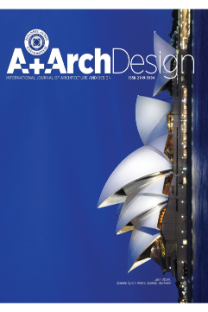Potential Contributions of Topology Optimization for Building Structures: A Redesign Case Study on Saint Voukolos Church
Topology optimization, which has been used in many sectors for a long time, has recently become one of the new research and application trends in the field of architecture. Topology optimization, which can be considered as a part of additive manufacturing, is one of the initiatives to reduce the use of materials during the construction phase by deciding on the architectural design processes [1]. The topology optimization applied according to the load distribution of the structure also reveals unique forms for each structure [2]. This paper aims to examine the potential contributions of a structure designed with topology optimization to the structure in terms of material and form and to create an exemplary model in this context. For this purpose, Saint Voukolos Church, one of the historical masonry buildings in İzmir/ Turkey, was selected and redesigned with topology optimization. The topological optimization of this structure, which was 3D modeled in Rhinoceros®, was made with tOpos®, and two (existing and redesigned) designs were compared in terms of structure, material, and form. As a result, it has been seen that the topologically optimized proposed structure can be built with much less material than the existing structure and more original forms can emerge.
Keywords:
Topology optimization structural optimization, masonry, architecture,
___
- [1] Jipa, A., Bernhard, M., Meibodi, M., & Dillenburger, B. (2016, November). 3D-printed stay-in-place formwork for topologically optimized concrete slabs. In Proceedings of the 2016 TxA Emerging Design+ Technology Conference (pp. 97-107). Texas Society of Architects.
- [2] Sigmund, O. (1994). Design of material structures using topology optimization (Doctoral dissertation, Technical University of Denmark).
- [3] Beghini, L. L., Beghini, A., Katz, N., Baker, W. F., & Paulino, G. H. (2014). Connecting architecture and engineering through structural topology optimization. Engineering Structures, 59, 716-726.
- [4] Peng, X. (2016). Structural topology optimization method for morphogenesis of dendriforms. Open Journal of Civil Engineering, 6(04), 526.
- [5] Bialkowski, S. (2018). Topology Optimisation Influence on Architectural Design Process-Enhancing Form Finding Routine by tOpos Toolset utilization.
- [6] de Oliveira, C. J., Steffen, L. O., de Moraes Vasconcellos, C. A., & Sanchez, P. F. (2019). Structural Topology Optimization as a Teaching Tool in the Architecture. Revista de Ensino de Engenharia, 37(3).
- [7] Søndergaard, A., ve Dombernowsky, P. (2011). Unikabeton prototype.
- [8] Naboni, R., ve Paoletti, I. (2018). Architectural morphogenesis through topology optimization. In Handbook of research on form and morphogenesis in modern architectural contexts (pp. 69-92). IGI global.
- [9] Dapogny, C., Faure, A., Michailidis, G., Allaire, G., Couvelas, A., ve Estevez, R. (2017). Geometric constraints for shape and topology optimization in architectural design. Computational Mechanics, 59(6), 933-965.
- [10]URL-1. Archdaily. (n.d.). Qatar National Convention Centre / Arata Isozaki. https://www.archdaily.com/425521/qatar-national-convention-centre-arata-isozaki, last accessed on 28 April 2022.
- [11] Januszkiewicz, K., ve Banachowicz, M. (2017, October). Nonlinear shaping architecture designed with using evolutionary structural optimization tools. In IOP Conference Series: Materials Science and Engineering (Vol. 245, No. 8, p. 082042). IOP Publishing.
- [12] URL-2. VisitIzmir. (n.d.). Aziz Vukolos Kilisesi Kültür Merkezi (Ayavukla Kilisesi). Retrieved 1 May 2022, from https://www.visitizmir.org/tr/Destinasyon/9567, last accessed on 5 April 2022.
- [13] URL-3. Izmir.ktb., (n.d.). Retrieved 1 May 2022, from https://izmir.ktb.gov.tr/TR-210608/aya-vukla-aziz-vukolos-kilisesi.html, last accessed on 5 April 2022.
- [14] Yardım, B., Yaka, N. F., Bingül, E. E., Yüreğir, S. Ö., Dipburun, E., Teket, Z. G., Arkan, Y. E., & Şerifaki, K. (2004/2007). "İzmir Basmane Semti Aya Vukla Kilisesi Rölöve, Restitüsyon ve Restorasyon Projesi", Proje Yöneticileri: Başak İpekoğlu, S. Sarp Tunçoku, İzmir Yüksek Teknoloji Enstitüsü, Mimarlık Fakültesi, Kültür Varlıklarını Koruma ve Onarım Bölümü, İzmir.
- ISSN: 2149-5904
- Başlangıç: 2015
- Yayıncı: İstanbul Aydın Üniversitesi
